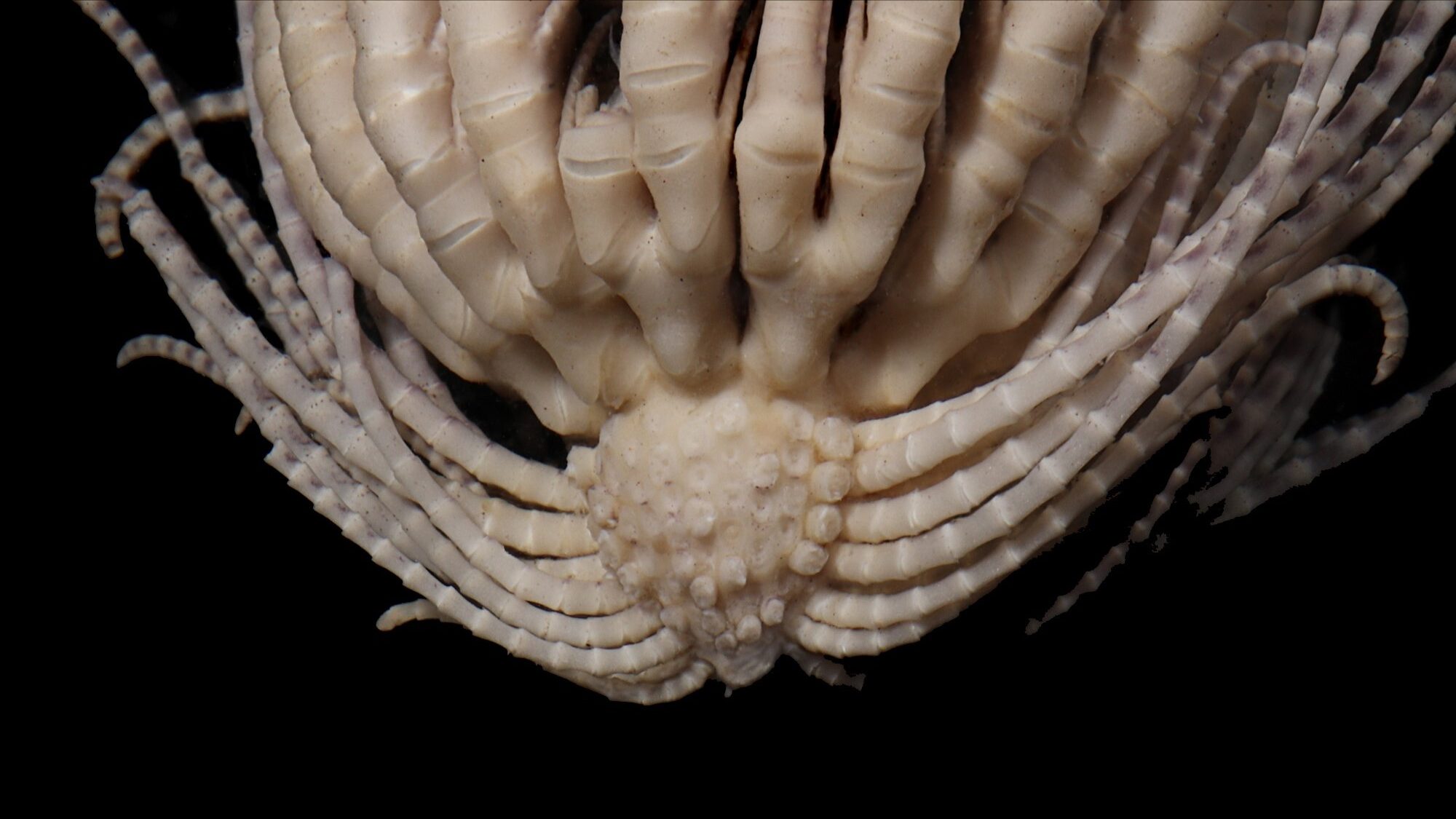

Marine biologists combing through some of the coldest ocean water on Earth have uncovered a never-before-seen sea creature they call the Antarctic strawberry feather star. But don’t let the cute name fool you. Though its body is shaped like a plump fruit, its other features are pure eldritch horror: 20 protruding arm-like appendages that could be sprouting from an Alien movie monster. Some of the “arms” are up to 8 inches long and studded with bumps or feathery tendrils.
“As we continue to understand how diverse ecosystems like the Antarctic are, or other difficult-to-sample habitats like the deep sea, we should continue to appreciate how precious and important these areas are in sustaining a diverse marine ecosystem,” says Nerida Wilson, an invertebrate marine biologist at the Western Australian Museum. Wilson and her colleagues reported the Antarctic strawberry feather star and three other new feather star species in a study published in July in the journal Invertebrate Systematics.
Those four species were among the creatures caught in a net cast in the sub-Antarctic Indian Ocean. Researchers used DNA samples from the invertebrates to look for a special genetic marker, named mitochondrial cytochrome oxidase subunit 1. This gene is a popular identifier, because it mutates at a rate that helps distinguish between vertebrate and invertebrates, and also has conserved sequences that allow biologists to identify closely related species.
[Related: Scientists are tracking down deep sea creatures with free-floating DNA]
Some feather stars, even to a trained eye, look remarkably similar. These animals belong to the phylum Echinodermata—other members of this group are starfish, sea urchins, and sea cucumbers. These aquatic animals have five or more flexible arms with a cup-shaped body. Before DNA sequencing became available in 1977, Antarctic feather stars were thought to belong to a single species called Promachocrinus kerguelensis.
This new study adds seven species of these creatures, the DNA sequencing revealed—four were the newly discovered ones, and three were critters that had been originally misclassified as other kinds of animals. “The application of molecular tools to understanding biodiversity is widely applicable and has become a necessary part of understanding all living things,” Wilson says.

“It is fantastic that the authors have done this taxonomic work. It is what ecologists like me depend on to do our work because the first step of understanding species interactions is knowing who’s there in the first place,” says Angela Stevenson, a postdoctoral researcher at the GEOMAR Helmholtz Center for Ocean Research Kiel in Germany who was not involved in the study. She adds that these genetic findings are helpful in understanding the diverse ecosystem lurking in deep sea zones, polar regions, and other hard-to-reach places.
Of the eight species, six have 20 arms and two have 10 arms. The most eye-catching of the bunch was the Antarctic strawberry feather star (formally, Promachocrinus fragarius.) On the base of its strawberry-sized body are circular bumps where tentacles with tiny claws anchor this animal to the ocean floor. The arms stretch out to help the creature move.
[Related: What this jellyfish-like sea creature can teach us about underwater vehicles of the future]
The newfound animals have developed unusual colorations. Promachocrinus kerguelensis are a shade of yellow-brown. But the newly discovered Promachocrinus fragarius specimens had unexpected pigmentation, including purplish spots or dark red hues.
“As we continue to understand how diverse ecosystems like the Antarctic are, or other difficult-to-sample habitats like the deep sea, we should continue to appreciate how precious and important these areas are in sustaining a diverse marine ecosystem,” says Wilson. “We need to conserve all habitats, not just the ones we can easily visit.” The strawberry feather star lives as deep as 3,800 feet under the ocean surface, the authors estimate—a fittingly extreme home for a far-out animal.
Correction (August 23, 2023): The article previously stated that feather stars are in the same taxonomic class as starfish, sea urchins, and sea cucumbers. They are in the same phylum (a broader taxonomic group) but not the same class.
